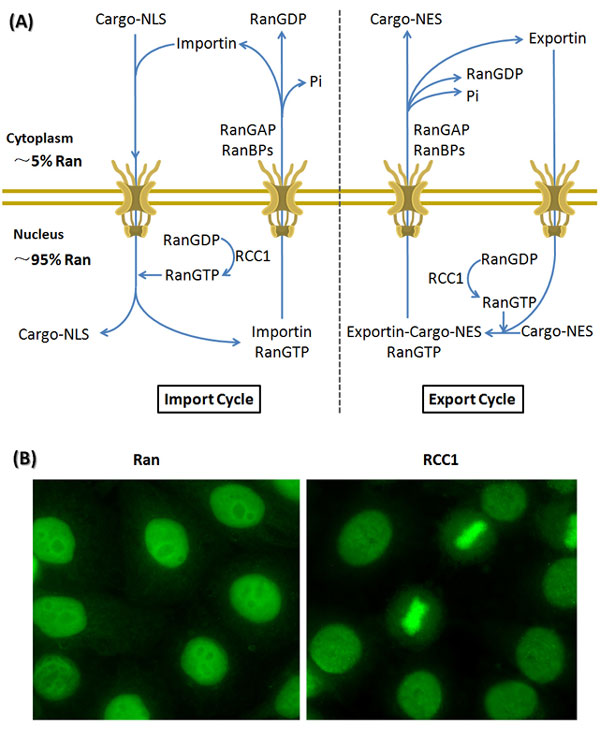Ran compartmentalization directs the nucleocytoplasmic transport
Keywords
Flag Inappropriate
Delete Content

Ran compartmentalization directs the nucleocytoplasmic transport
(A) Ran shuttles across the NE, with about 95% in the nucleus and 5% in the cytoplasm. A high concentration of RanGTP in the nucleus is maintained by RCC1, which catalyzes the formation of RanGTP. RanGDP is prevalent in the cytoplasm due to RanGAP and RanBPs to increase its GTPase activity. During import (left), importins bind to NLS-containing cargoes in the cytoplasm and translocate them into the nucleus through NPCs. RanGTP in the nucleus binds to importins and releases the cargoes from the complex. The RanGTP-importin complex is then recycled to the cytoplasm, where it is disrupted after RanGTP hydrolysis. During export (right), NES-containing cargoes in nucleus bind to exportins and RanGTP, and translocate out of nucleus. In the cytoplasm, the cargoes are released from the complex by RanGTP hydrolysis (Clarke & Zhang 2008; Stewart 2007; Xu & Massague, 2004; Strambio-De-Castillia et al. 2010). (B) Images of immunofluorescence in HeLa cells. The green staining shows the location of Ran and RCC1 in these cells. Each circular shape is a cell. RCC1 appears to be located near the nucleus and chromosomes, whereas Ran appears more diffusely around the cell, both inside and outside the NE.
This image is linked to the following Scitable pages:
How does Ran GTPase control both protein import during interphase and spindle attachment to the chromosomes during M-phase? It all has to do with its concentration gradient in the cell.





















Comments
CloseComments
Please Post Your Comment